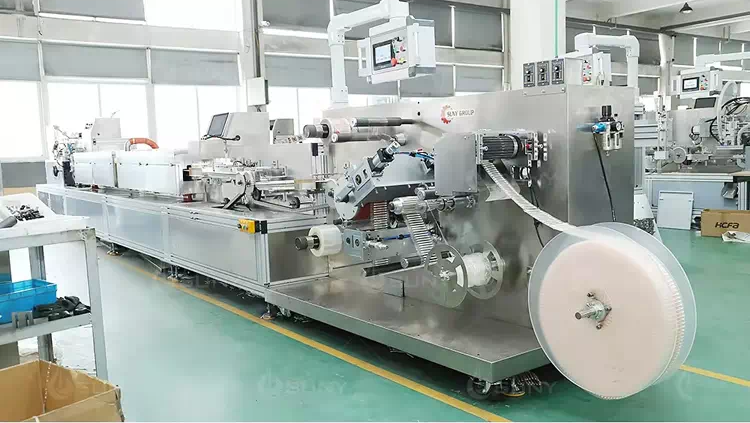Cotton swabs are ubiquitous in households, healthcare, and cosmetic industries. The demand for high-quality, reliable cotton swabs has surged, leading to an increase in the need for efficient manufacturing processes. If you’re in the business of cotton swab production, you’re likely familiar with the machinery that helps produce these essential products. But one of the most critical decisions in cotton swab manufacturing is selecting the right material for production. In this article, we’ll dive into the materials that can be used in cotton swab making machines, how they impact the quality of the final product, and why it’s essential to choose the right one.
1. What Are Cotton Swabs Made Of?
Cotton swabs are primarily composed of three key components: the cotton at the ends, the stick (often plastic or paper), and the glue or adhesive that binds them. While the cotton is the main focus, the material used for the stick is also critical in determining the swab’s overall strength, flexibility, and environmental impact.
Let’s break down the materials used for each part:
Cotton:
The cotton used in cotton swabs must be soft, absorbent, and free of impurities. The cotton is typically made from 100% pure cotton fibers or cotton blends depending on the quality requirements and end-user preferences. These fibers must undergo a cleaning process to remove any dust or debris, ensuring that they are soft to the touch and hypoallergenic.
2. What Materials Can Be Used for the Cotton Swab Stick?
Cotton swab sticks come in various materials, each offering unique advantages and potential drawbacks. The choice of stick material depends on the desired characteristics of the finished product, such as strength, environmental impact, cost, and ease of use.
Plastic Sticks:
Plastic is the most commonly used material for cotton swab sticks. It’s durable, lightweight, and cost-effective. Plastic sticks can be made from materials like polypropylene (PP) or polystyrene (PS), which are both strong and flexible. However, the environmental concerns associated with plastic waste have pushed some manufacturers to seek alternative materials.
Paper Sticks:
In recent years, there has been a shift toward using paper sticks, especially in eco-friendly cotton swab products. Paper sticks are biodegradable, making them an attractive option for environmentally conscious consumers. They also have a smoother texture, giving the product a slightly more premium feel. Paper sticks are typically made from kraft paper, cardboard, or recycled paper, offering a good balance of strength and eco-friendliness.
Bamboo Sticks:
Bamboo is another popular alternative to plastic due to its sustainability. Bamboo is a fast-growing plant that requires minimal water and no pesticides, making it an eco-friendly option for cotton swab sticks. It’s strong, lightweight, and biodegradable. Bamboo cotton swabs are increasingly favored in the cosmetic and personal care markets as eco-conscious alternatives to plastic or paper.
3. What Type of Glue or Adhesive Is Used?
The adhesive used in cotton swabs is crucial because it holds the cotton firmly onto the stick. The adhesive must be strong enough to withstand typical usage but also safe for the skin and environment.
Hot Melt Glue:
Most manufacturers use hot melt glue for cotton swabs. This type of glue is melted and applied to the cotton and stick before solidifying, providing a secure bond that’s easy to work with. It’s commonly used in automated cotton swab making machines due to its fast-drying properties.
Water-Based Glue:
Some eco-friendly manufacturers prefer water-based glue because it is non-toxic and contains fewer harmful chemicals. Water-based adhesives are becoming increasingly popular as consumers seek products that are more natural and less harmful to the environment.
Other Eco-Friendly Adhesives:
With a growing demand for green products, alternatives like bio-based adhesives are being tested in the cotton swab manufacturing process. These adhesives offer a sustainable, non-toxic option for companies looking to minimize their environmental footprint.

4. Frequently Asked Questions (FAQs):
Can cotton swabs be made with synthetic fibers instead of cotton?
Yes, some cotton swabs are made with synthetic fibers, such as rayon or polyester. These materials are often used in medical or industrial applications where strength and precision are critical. However, most consumer-grade cotton swabs still use natural cotton for its softness and hypoallergenic properties.
Are there any eco-friendly alternatives to plastic for cotton swab sticks?
Yes, bamboo and paper are both great alternatives to plastic. Bamboo is biodegradable and sustainable, while paper is recyclable and can be composted.
How do cotton swab making machines handle different materials?
Cotton swab making machines are designed to work with various materials. These machines can be adjusted to accommodate different stick materials, adhesives, and cotton types, making them highly versatile and adaptable to industry needs.
The materials used in cotton swab production are essential in ensuring the quality, durability, and sustainability of the product. Cotton, stick material, and adhesive all play significant roles in determining the final outcome. As consumer preferences shift toward more eco-friendly and sustainable products, manufacturers must stay ahead of the curve by adopting environmentally friendly materials without compromising on quality. Whether you choose plastic, bamboo, or paper, selecting the right materials will help you produce high-quality cotton swabs that meet market demands and contribute to a more sustainable future.
Email:sunymachine@gmail.com
Add: Henan Communication Industry Area, Jingbei 3rd Road, Zhengzhou, Henan, China